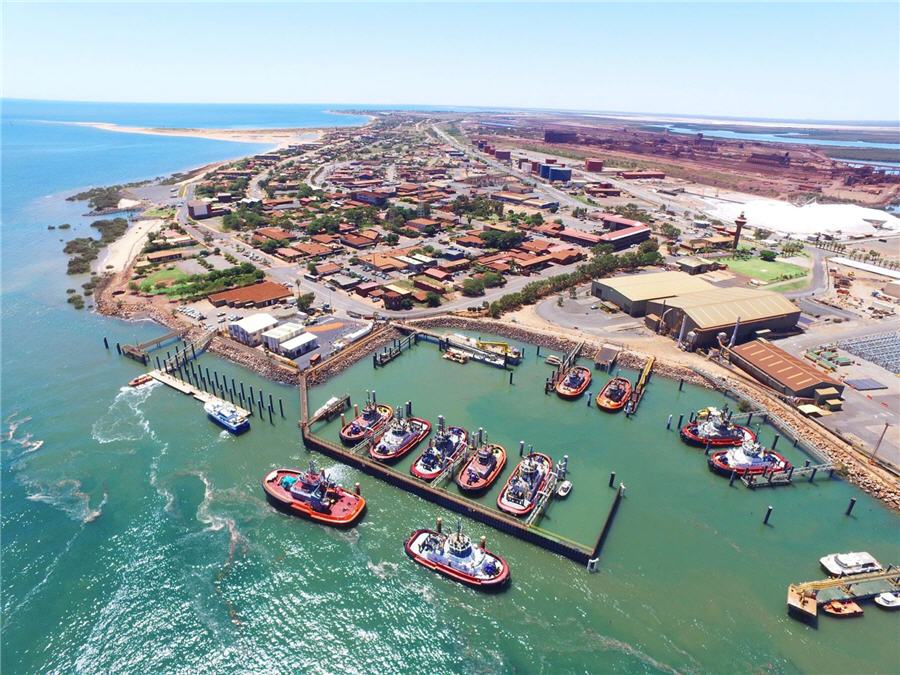
With a market facing a global deficit that was unforeseen at the start of the year, the world’s biggest iron ore export port is flagging a timely boost in shipments as Fortescue Metals Group Ltd. and rivals bring on new mines in Australia’s remote Pilbara region.
The projected shortfall comes in the wake of Vale SA’s January dam disaster in Brazil, which prompted the biggest producer to forecast output losses of as much as 75 million tons this year. The supply shock could last to 2024, according to the latest Australian government estimates.
“We’re seeing other countries, like in this case, Brazil, running through difficulties,” Roger Johnston, chief executive officer of the Pilbara Ports Authority, said in an interview. “So I’d certainly think for the next 12-to-18 months, you’ll see volumes — out of places like the Pilbara — lift.”
The authority oversees three ports including Port Hedland, the world’s biggest bulk export terminal, and shipped more than half a billion tons of ore last financial year from miners including Fortescue, BHP Group and Roy Hill Holdings Pty. The authority also runs the Port of Dampier, which is used by miners including Rio Tinto Group, and the Port of Ashburton.
Fortescue said this week it will proceed with the $2.6 billion Iron Bridge project in Australia, adding the equivalent of 20 million dry tons a year of magnetite concentrate
Port Hedland is preparing for higher volumes as Australian producers undertake a range of renewal projects, Johnston said last month. Fortescue said this week it will proceed with the $2.6 billion Iron Bridge project in Australia, adding the equivalent of 20 million dry tons a year of magnetite concentrate — a high-quality product — into the market with initial sales from 2022.
Fortescue is also set to open the $1.3 billion Eliwana mine next year. While BHP, the world’s biggest miner, is building the $2.9 billion South Flank Project and Rio is starting construction on its $2.6 billion Koodaideri iron ore mine.
There are several projects currently undergoing feasibility studies — including Brockman Mining Ltd.’s Marillana project, which are expected to commence production within the next five years, according to the Australian government.
Amid gathering supply concern, Rio said last month it may consider how to raise production in the medium term if it’s clear the disaster will have a longer-lasting impact and affect high-grade ore. Fortescue also signaled that its Eliwana mine may help the market from 2020.
Australia’s export volumes are forecast to increase from 847 million tons in fiscal 2019 to 874 million tons in fiscal 2021, Australia estimated in its March quarter resources and energy report. The authority’s throughput totaled 699 million tons in total in fiscal 2018, including 654.7 million tons of iron ore exports.

To enable ships to carry increased volumes, the authority’s groundbreaking tidal model has enabled extra depth availability in the Port Hedland shipping channel, increasing the average draft of bulk carriers by up to 71 centimeters, allowing each ship to carry an additional 8,500 tons of iron ore.
“Those are big numbers,” said Johnston, as Port Hedland handles about 6,000 ship movements a year out of the authority’s 15,000 total. While this innovation benefits the miners, it’s about creating efficiency for the port, he said.
“When your tonnages rise, your ships don’t rise exponentially with the tonnages,” said Johnston. “We are all at the edges, pushing everything to the absolute limit.”
In addition to iron ore, the authority last fiscal year exported more than 3 millions tons of lithium concentrate, and is planning for a ramp up in production and shipments of the key battery component. Australia is the largest global supplier of lithium and the government forecasts the value of exports to rise to A$1.7 billion ($1.2 billion) by 2024. The authority also handles salt and accounts for 2.65 percent the world’s solar salt.
To boost exports of lithium and other materials, the port has invested over A$80 million in the development of a general cargo facility
To boost exports of lithium and other materials, the port has invested over A$80 million in the development of a general cargo facility Lumsden Point, and has identified potential multi-commodity export sites near Dampier, said Johnston. “It’s not necessarily a volume-driven thing, but it’s certainly a value-driven thing.”
(By Krystal Chia)